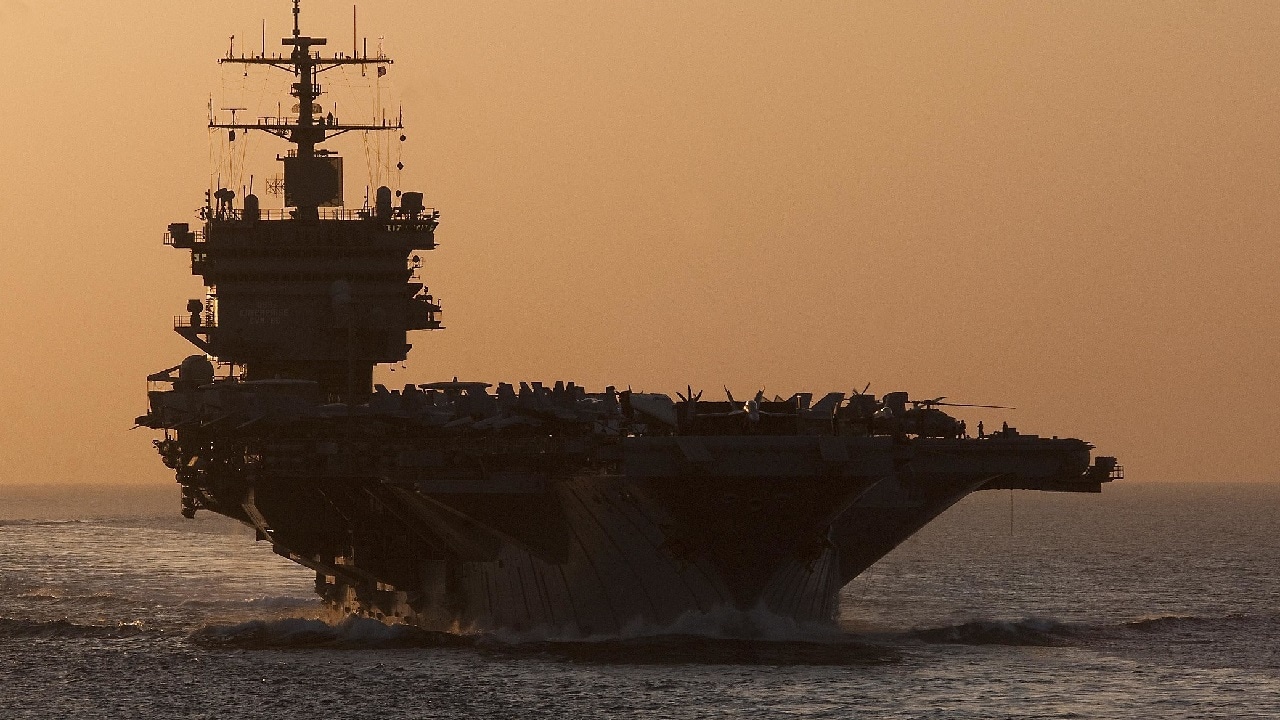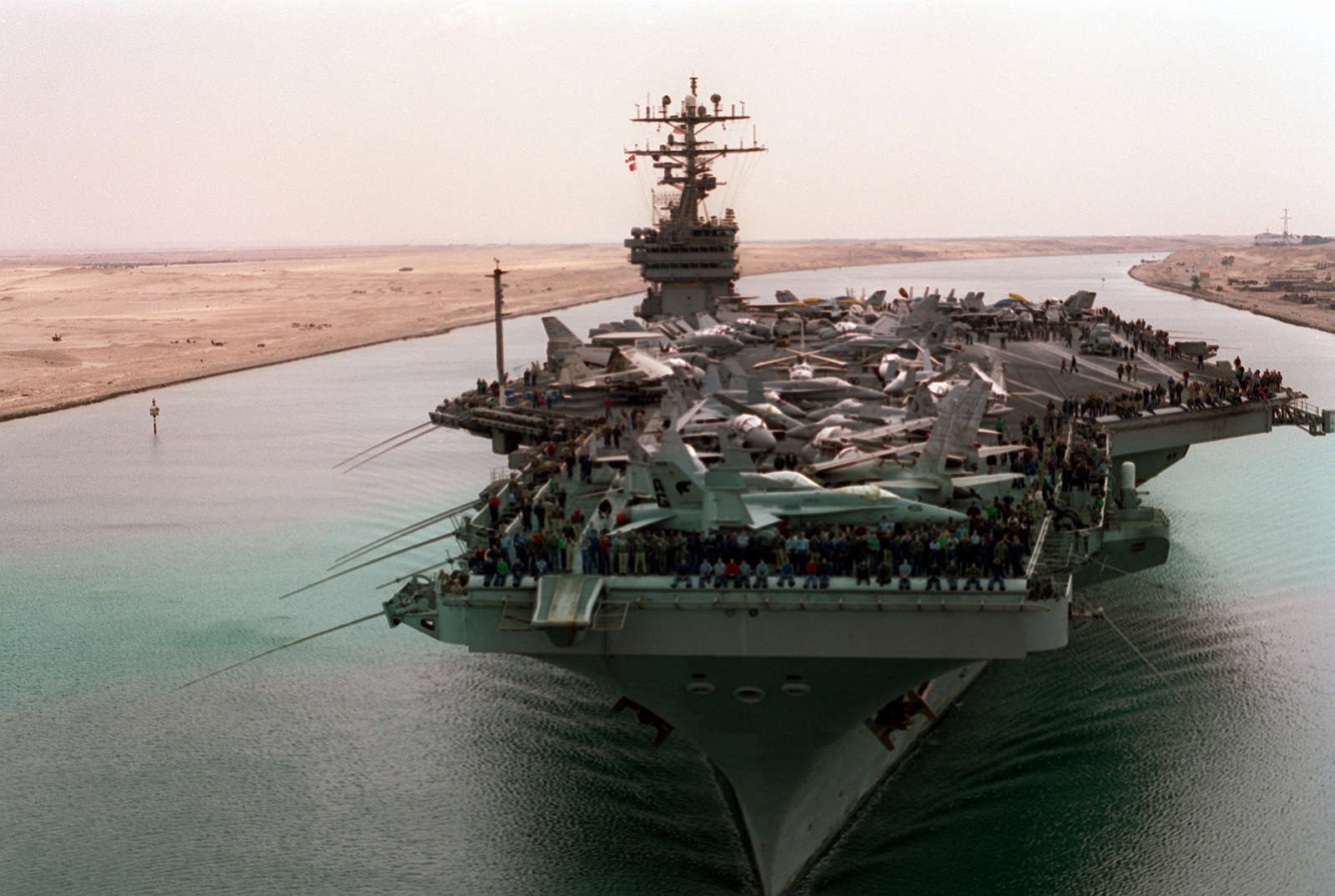The USS Enterprise (CVN-65): A Legendary Icon Among Aircraft Carriers
The Legendary USS Enterprise: A Journey Through Naval History
The USS Enterprise holds a unique place in the annals of American naval history. While most may associate the name “Enterprise” with the iconic starship from Star Trek, there is a real-world counterpart that has left an indelible mark on the United States Navy. This nuclear-powered aircraft carrier revolutionized naval warfare and set a standard that endures to this day.
In August 1950, Admiral Forrest Sherman, Chief of Naval Operations, initiated a feasibility study for nuclear-powered aircraft carriers. A shore-based nuclear reactor known as the A1W was developed and successfully tested. Subsequently, in 1958, funding was approved for the construction of the world’s first nuclear-powered aircraft carrier, the USS Enterprise, which was commissioned in November 1961.
The USS Enterprise was a monumental engineering achievement. Stretching a staggering 1,123 feet in length, it held the distinction of being the longest aircraft carrier ever constructed and displaced 93,284 tons when fully loaded. Powered by eight A2W reactors, a development of the A1W, it generated an astonishing 280,000 shaft horsepower, propelling the Enterprise to speeds exceeding thirty-five knots. A crew of 5,500 personnel, including the air wing, operated aboard the carrier, which had the capacity to carry eighty-five aircraft.
The Enterprise followed the design of its conventionally powered predecessors, such as the Kitty Hawk and Constellation, featuring four catapults and four aircraft elevators. Its distinctive superstructure, nicknamed “the beehive,” housed advanced electronic countermeasure equipment and the SPN-32 and SPN-33 phased-array radar systems, marking a significant leap in carrier technology.
Remarkably, the USS Enterprise may have been the first completely unarmed aircraft carrier since the Navy’s first carrier, USS Langley. Originally designed to carry surface-to-air missiles, these were eventually removed due to cost considerations. It wasn’t until 1967 that two Mk. 25 Basic Point Defense Missile System launchers were installed, each armed with eight Sea Sparrow Missiles. These were later replaced with Mk. 29 launchers, and in the 1980s, three Mk. 15 Phalanx Close-In Weapon Systems were added to bolster the ship’s defenses.
Throughout its storied career, the USS Enterprise hosted a variety of carrier-borne aircraft, including F-4 Phantoms, F-14 Tomcats, A-1 Skyraiders, A-3 Skywarrior bombers, A-4 Skyhawks, A-5A Vigilantes, and A-7 Crusaders. Originally designated as a Carrier, Nuclear, Attack (CVA), it was later reclassified as a multi-purpose Carrier, Nuclear (CVAN). The final air wing to operate from the Enterprise was Carrier Air Wing One, consisting of four squadrons of F/A-18E/F Super Hornets.
The operational history of the Enterprise began in 1962 when it participated in the Cuban Missile Crisis blockade. In 1964, it played a vital role in Operation Sea Orbit, circumnavigating the globe alongside the nuclear-powered guided missile cruiser USS Long Beach and the nuclear-powered guided missile destroyer USS Bainbridge, collectively known as Task Force One. This historic voyage demonstrated the agility and rapid response capability of a nuclear-powered fleet.
In 1965, the Enterprise conducted air operations in support of the Vietnam War, delivering airstrikes against Viet Cong and North Vietnamese targets. In 1968, it served as the flagship for Task Force 71 during the response to the North Korean seizure of the spy ship USS Pueblo. Later that year, it conducted additional air strikes in Southeast Asia. The “Big E” completed a total of six deployments to Vietnam, with the last one taking place in 1975.
In 1969, while conducting readiness inspections off Hawaii, a rocket exploded on the flight deck, resulting in a devastating fire. Twenty-eight crew members lost their lives, and 343 others were injured, with fifteen aircraft destroyed, including brand-new A-7 Corsairs. Despite the catastrophic damage and casualties, the Enterprise managed to enact emergency repairs and resume flight operations within hours before heading to drydock in Hawaii.
The post-Vietnam era saw relatively fewer operational deployments for the Enterprise until 1988 when its air wing sank an Iranian Saam-class frigate as part of Operation Praying Mantis, the U.S. response to Iran’s mining of the Persian Gulf. During the 1990s, it enforced no-fly zones over Bosnia and Iraq. In October 2001, it conducted some of the first air missions over Afghanistan, conducting airstrikes against Taliban and Al-Qaeda forces.
On December 1, 2012, the USS Enterprise was officially decommissioned. Over the last few years, it underwent gradual preparations for disposal, with its military equipment removed and reactors deactivated. The ship was formally decommissioned on February 3, 2017, in a private ceremony at the Newport News Shipyard in Virginia.
The USS Enterprise proved the viability of nuclear power for aircraft carriers, but perhaps its most remarkable achievement was often overlooked. It circumnavigated the globe three times, completed twenty-five overseas cruises, and logged an astounding four hundred thousand aircraft landings throughout its lifetime. It participated in combat missions from Vietnam to Afghanistan, and tens of thousands, if not hundreds of thousands, of sailors served as part of its crew. The Navy has taken steps to ensure that the storied name of Enterprise lives on. In 2012, then-Secretary of the Navy Ray Mabus announced the construction of the third Gerald R. Ford-class carrier, CVN-80, which will carry on the legacy of the Enterprise well into the twenty-first century.
Hits: 50












